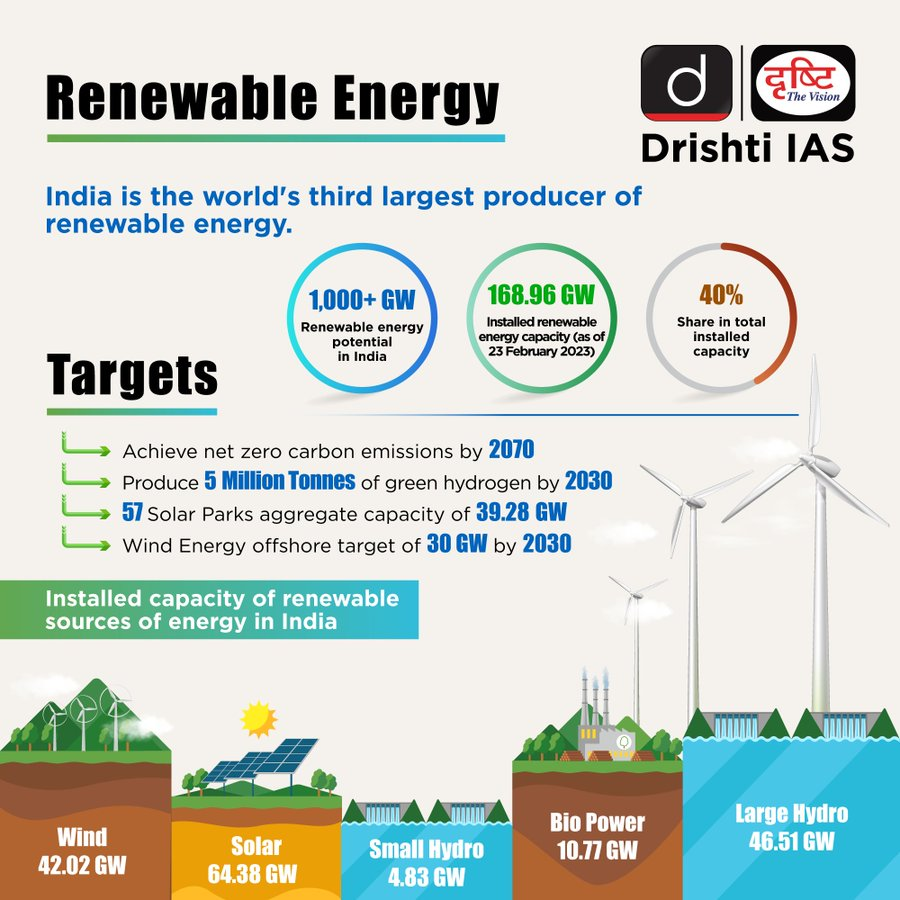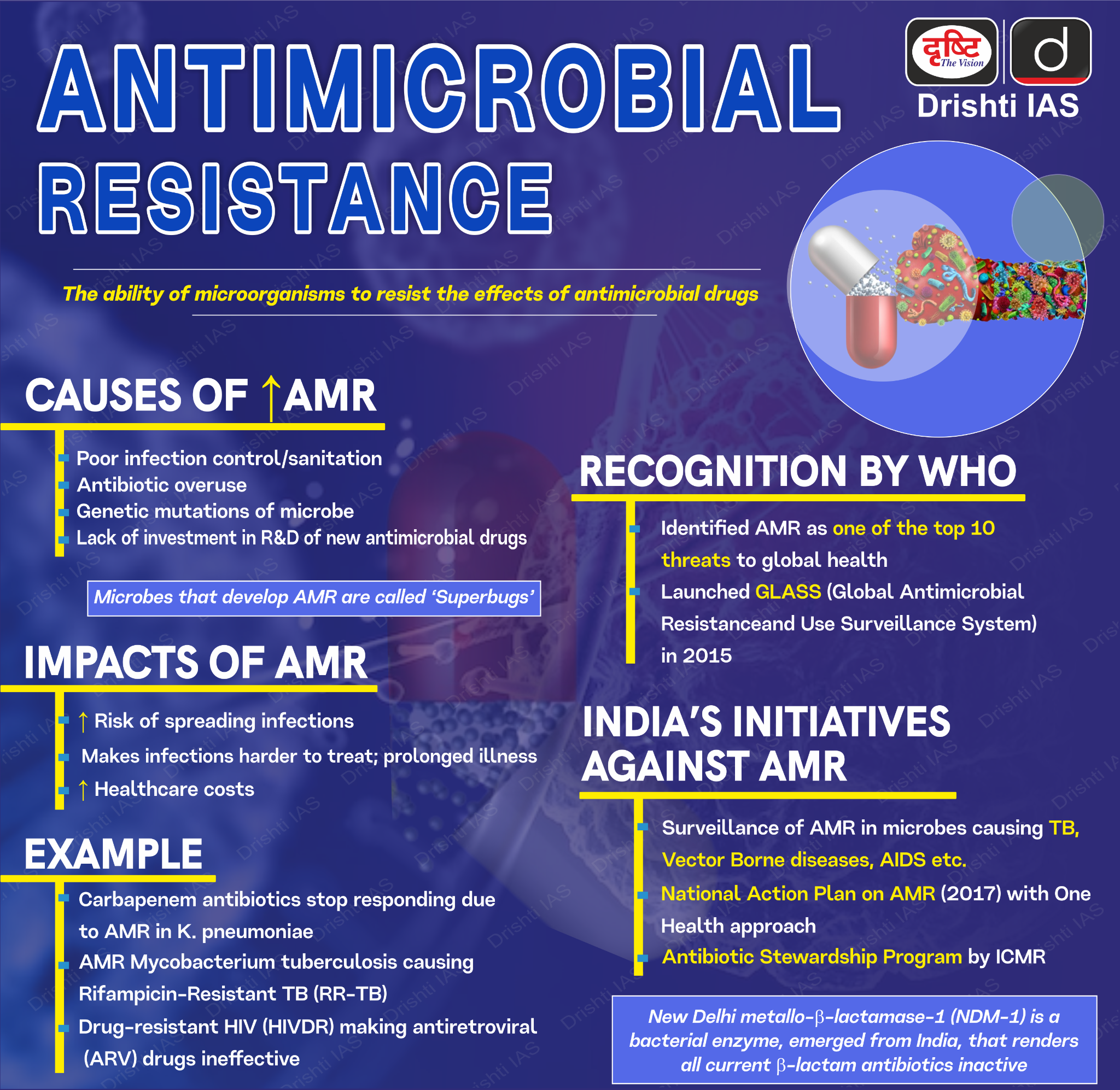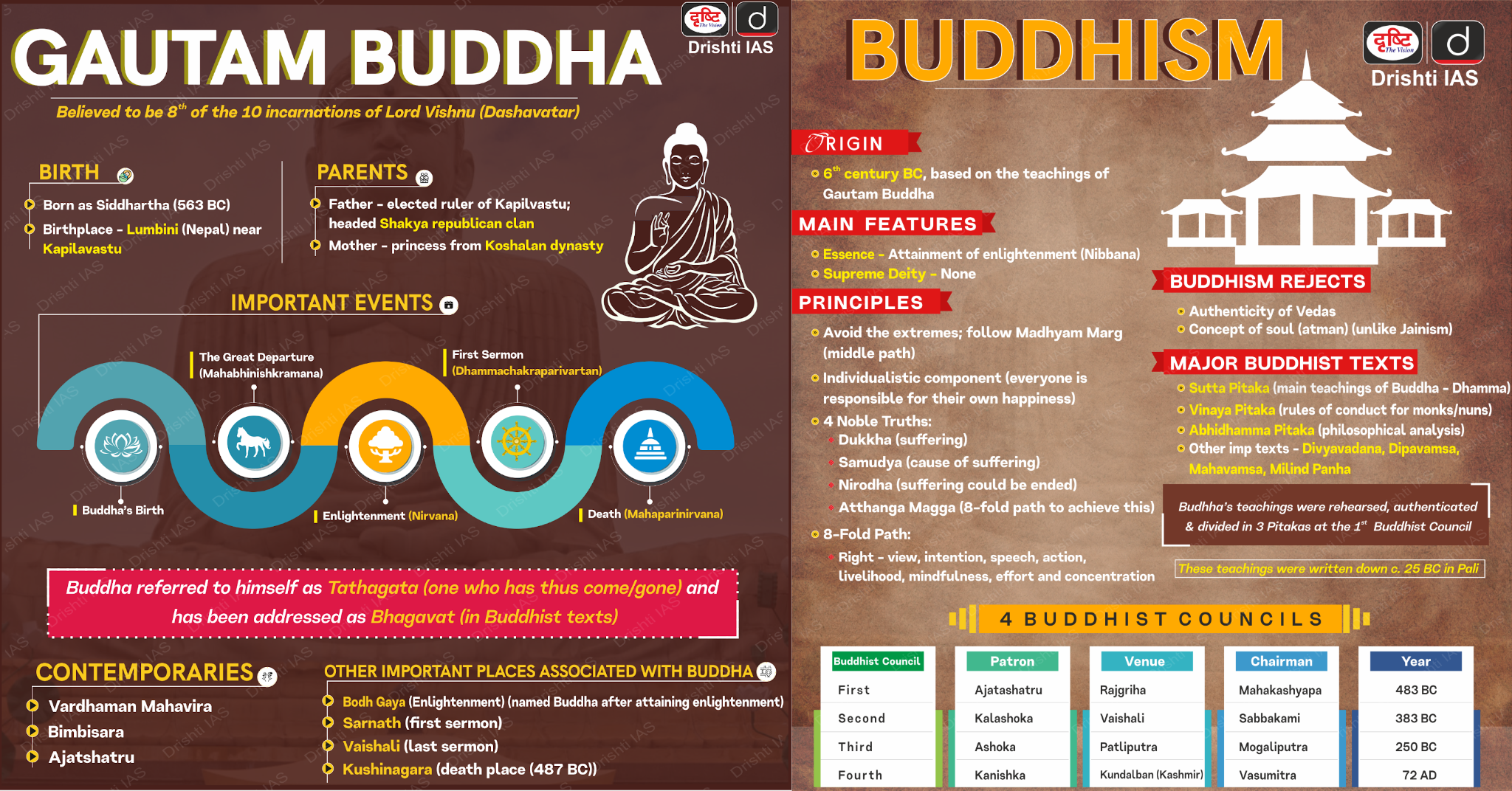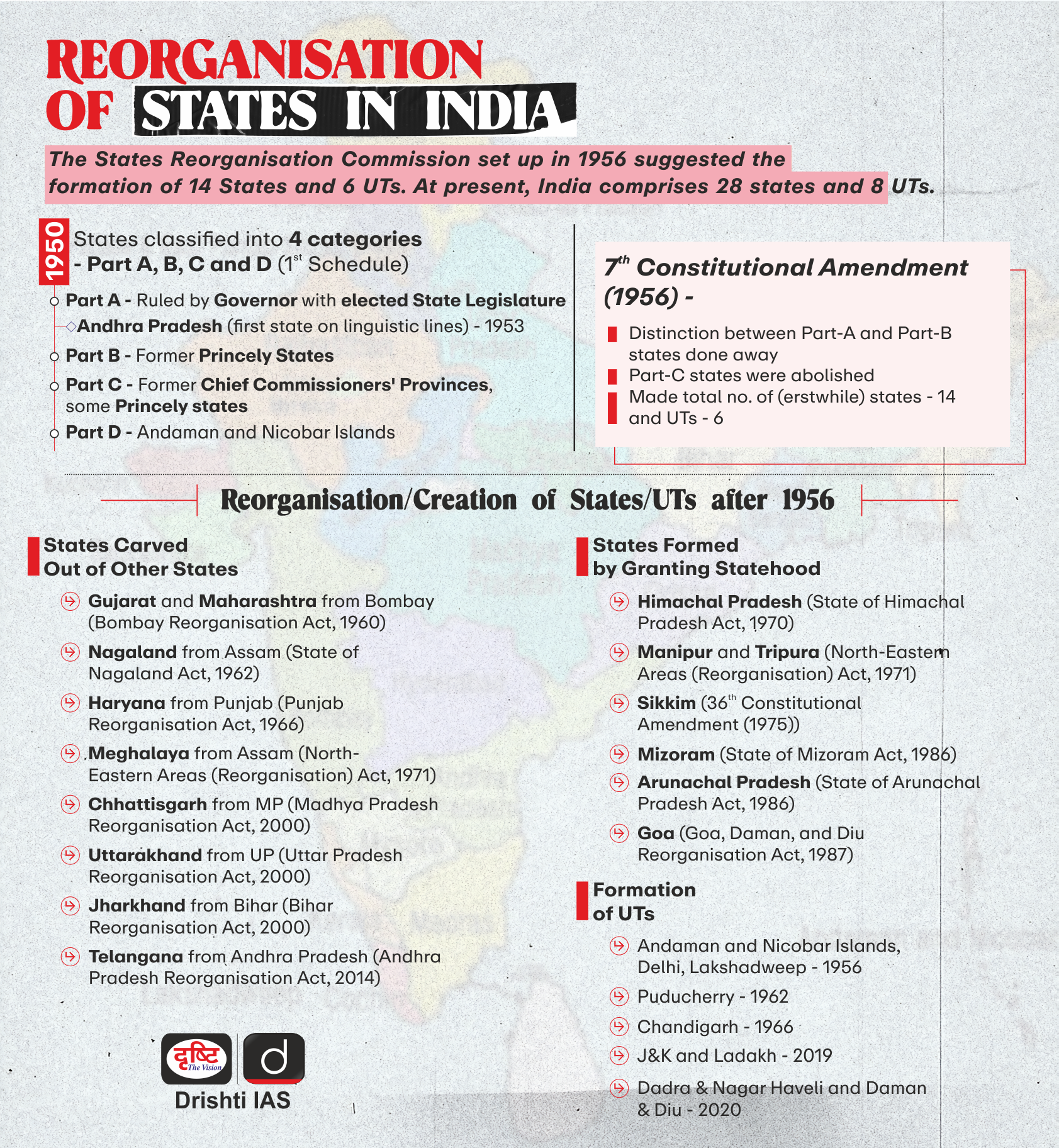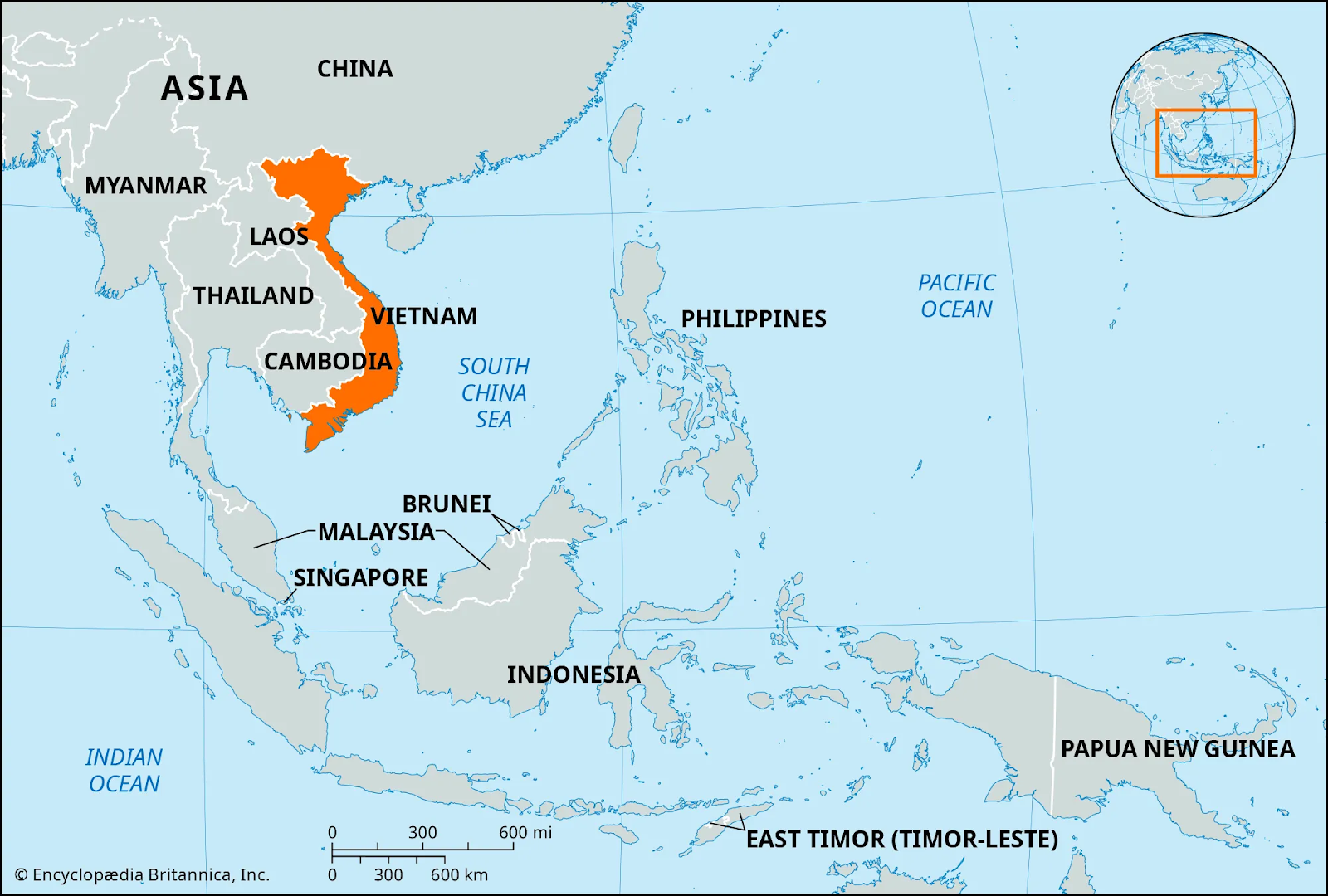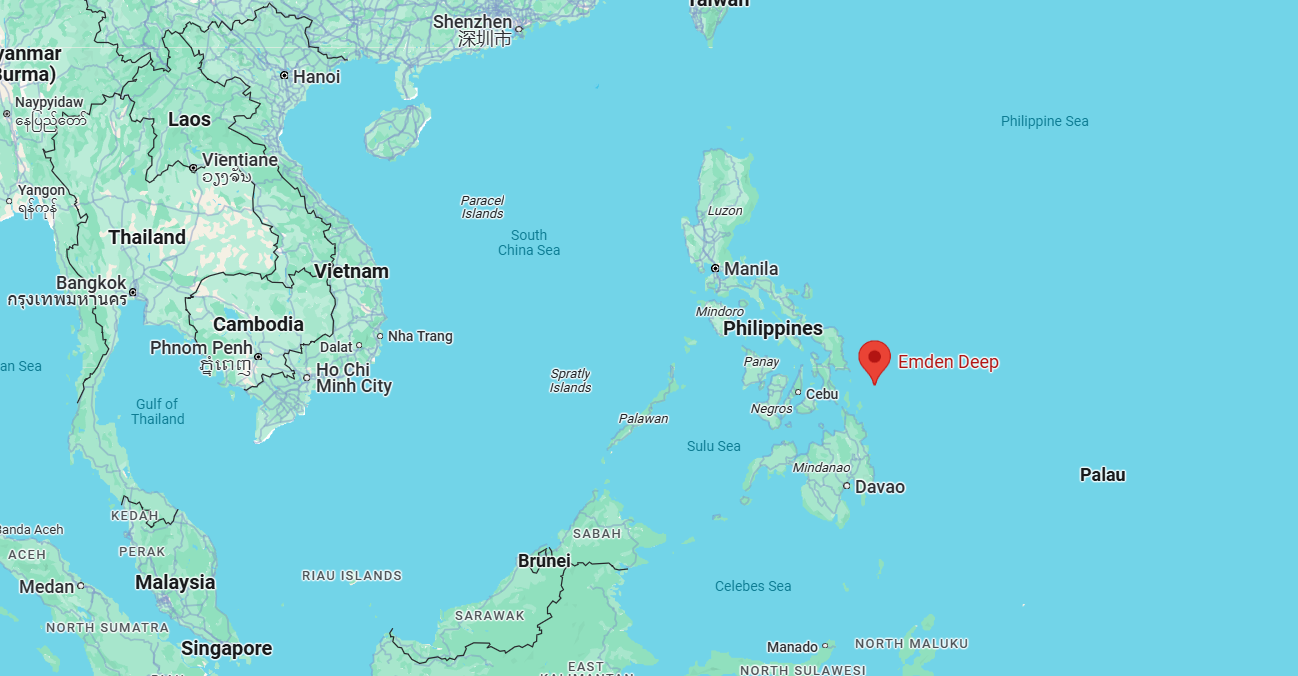Annual Survey of Services Sector Enterprises
For Prelims: Service Sector, Digital India, AI, ML, Skill India Digital, PMKVY 4.0, Global Capability Centers (GCCs), Digital Literacy.
For Mains: State of incorporated services sector enterprises in India, their contribution, associated challenges and way forward.
Why in News?
The Ministry of Statistics and Programme Implementation released findings from a pilot study on the Annual Survey of Services Sector Enterprises, aimed at filling critical data gaps in India's incorporated service sector, which is not covered by existing surveys like the Annual Survey of Unincorporated Sector Enterprises.
- It covered those service sector enterprises which are registered under Companies Act and Limited Liability Partnership Act.
- It found that 82.4% enterprises were Private Limited Companies, followed by Public Limited Companies (8%) and LLPs (8%).
What is the Importance of Services Sector Enterprises for India?
- Contribution to GDP: In FY 2024-25, the services sector contributed approximately 55% to India's Gross Value Added (GVA), up from 50.6% in FY14.
- It sustained strong growth at 7.6% in FY24, showcasing its resilience amid global challenges.
- Employment Generation: The sector employs approximately 30% of India's workforce, encompassing industries such as information technology, finance, healthcare, education, tourism, and retail.
- Global Trade: During April-December 2024, India's services exports stood at USD 280.94 billion.
- In telecommunications, computer, and information services, India accounts for 10.2% of global exports, ranking as the 2nd-largest exporter in this category.
- Foreign Direct Investment (FDI): From April 2000 to December 2024, the services sector attracted USD 116.72 billion in FDI, constituting about 16% of India's total FDI inflows during this period.
- Integration with Other Sectors: The 'servicification' of industry, or the growing integration of services like design, logistics, and after-sales support into manufacturing processes, has boosted productivity and added value to the industrial sector.
- Critical for Urbanization & Digital India: The expansion of FinTech and digital payments, is critical for the success of Digital India.
- The Smart Cities Mission also depends on this sector for services like urban mobility, waste management, and e-governance.
What are the Challenges Faced by the Services Sector in India?
- Skill Gaps & Workforce Readiness: The Economic Survey 2023-24 indicates that only 51.25% of India’s youth are considered employable, possessing the skills needed to meet the rapidly evolving demands of the industry.
- According to WEF, only 5% of India's workforce, the youngest and largest in the world, is recognized as formally skilled.
- Informal Employment Dominance: In 2017-18, around 78% of services sector jobs were informal.
- Gig workers (Swiggy, Ola, Uber) lack social security such as health insurance, retirement funds, or paid leave.
- Global Competition & Protectionism: IT sector faces visa restrictions (e.g., H-1B rejections by US), rise of competing hubs (e.g., Philippines (BPO), Vietnam (IT)), and declining cost advantage (e.g., Indian IT wages rose 8-10% annually on an average).
- Infrastructure Gaps: Larger units are yet to fully adopt AI and ML, which are essential for enhancing connectivity and customer engagement.
- A majority of MSME units in rural areas, run by women, SC-ST and other marginalized groups, do not have access to basic digital tools.
- Post-Pandemic Vulnerabilities: Inbound tourism in India is still recovering from the pandemic, with foreign tourist arrivals at 90% of 2019 levels in the first half of 2024.
How to Address Challenges in the Services Sector?
- Upskilling: Expand Skill India Digital to certify workers in AI, cloud computing, and cybersecurity and increase vocational training institutes under PMKVY 4.0.
- The Prime Minister Internship Scheme (PMIS) should be vigorously pursued to enhance employability and bridge the gap between academic knowledge and industry requirements.
- Strengthening Global Competitiveness: Negotiate free trade agreements (FTAs) with EU, UK, and Australia to reduce visa restrictions.
- Promote Global Capability Centers (GCCs) to leverage India's vast talent pool to support various functions like IT, R&D, and finance.
- Digital Infrastructure and Cybersecurity: Strengthen cybersecurity by investing in robust frameworks, promoting secure cloud adoption—particularly in financial institutions—and enhancing digital literacy for safe and effective tech use.
- Foster Growth in Tier-2 and Tier-3 Cities: NITI Aayog recommends decentralizing service-sector growth to Tier-2 and Tier-3 cities by boosting infrastructure and digital connectivity in smaller cities.
Conclusion
The services sector is vital to India's economy, contributing significantly to GDP, employment, and global trade. However, challenges like skill gaps, informal employment, and global competition hinder growth. Addressing these issues through upskilling, infrastructure development, and fostering growth in smaller cities can enhance sector resilience and global competitiveness.
|
Drishti Mains Question: What are the key challenges facing India's services sector despite its economic dominance, and how can it become more inclusive and resilient? |
UPSC Civil Services Examination, Previous Year Question (PYQ)
Prelims
Q. In the ‘Index of Eight Core Industries’, which one of the following is given the highest weight? (2015)
(a) Coal production
(b) Electricity generation
(c) Fertilizer production
(d) Steel production
Ans: (b)
Mains
Q. Industrial growth rate has lagged behind in the overall growth of Gross-Domestic-Product(GDP) in the post-reform period” Give reasons. How far are the recent changes is Industrial Policy capable of increasing the industrial growth rate? (2017)
Q. Normally countries shift from agriculture to industry and then later to services, but India shifted directly from agriculture to services. What are the reasons for the huge growth of services vis-a-vis the industry in the country? Can India become a developed country without a strong industrial base? (2014)
Global Wind Report 2025
For Prelims: Global Wind Report, Paris Agreement, Offshore Wind, COP28 Dubai, Cybersecurity, E-waste, Green Bonds, Carbon Credit, PLI Scheme, Green Hydrogen.
For Mains: Current status of wind energy production in India and globally, associated challenges and way forward.
Why in News?
The Global Wind Energy Council’s (GWEC) Global Wind Report 2025 warns that projected wind capacity will only meet 77% of 2030 targets, jeopardizing net-zero and Paris Agreement goals to limit warming to below 2°C (preferably 1.5°C).
What are Key Findings of the Global Wind Report 2025?
- Wind Power Installation: In 2024, 117 GW of new wind capacity was added globally, up slightly from 116.6 GW in 2023, bringing total global capacity to 1,136 GW.
- Regional Performance: China led the global wind market in 2024, contributing 70% of new capacity, followed by the United States, Brazil, India, and Germany as the other top markets.
- Uzbekistan, Egypt, and Saudi Arabia have emerged as success stories, as onshore wind capacity in Africa and the Middle East doubled in 2024 compared to previous years.
- Only 8 GW of offshore wind capacity was installed globally in 2024, marking a 26% drop from 2023.
- Challenges:
- Policy and Regulatory Issues: Instability in key markets, delays in project permitting.
- Infrastructure Gaps: Underinvestment in grid upgrades.
- Financial and Market Pressures: Inflation and high interest rates, trade protectionism and ineffective renewable energy auction systems
- Need to Scale-up: At COP28 Dubai, nations committed to tripling renewable capacity by 2030, with wind installations needing to reach 320 GW annually.
- Without this scale-up, efforts to limit warming to 1.5°C may fail, missing a crucial climate window.
What is the Status of Wind Energy in India?
- Total Wind Power Capacity: As of 31st March 2025, India has achieved a cumulative installed wind power capacity of 50.04 GW.
- In FY 2024–25, India added 4.15 GW of wind power capacity, up from 3.25 GW in FY 2023–24.
- Global Standing: India ranks 4th globally in terms of total installed wind power capacity, trailing only behind China, the United States, and Germany.
- State-wise Distribution: As of 2025, the top wind energy-producing states in India are Gujarat, Karnataka, and Tamil Nadu.
- Domestic Manufacturing Capacity: India boasts a robust wind turbine manufacturing industry with an annual production capacity of about 18,000 MW.
- Offshore Wind Energy Potential: The National Institute of Wind Energy estimates that Gujarat has 36 GW and Tamil Nadu about 35 GW of offshore wind energy potential.
What are Challenges in Wind Energy Production in India?
- Land Acquisition Complexities: Each wind turbine requires 7–8 acres for rotors larger than 150 metres in diameter, and slow land-use conversion from agricultural land to non-agricultural status causes major delays in large projects.
- Non-modernized grid: High-potential wind sites in Rajasthan, Gujarat, and coastal Tamil Nadu lack transmission infrastructure, raising energy costs due to distance from demand centers.
- Policy Inconsistencies: Withdrawal of incentives like Accelerated Depreciation and Generation-Based Incentives has created uncertainty.
- Differences in policies across states regarding tariffs, power purchase agreements, and approvals hinder uniform development.
- The upfront costs for wind projects (turbines, installation, and grid connection) are substantial and smaller developers often struggle to secure funding.
- Supply Chain Challenges: While India has a domestic manufacturing capacity of 5,200 MW for towers and 8,000 MW for gearboxes, blade availability remains a concern, leading to significant imports.
- Reliance on imported components, especially from China, raises concerns about supply chain stability and cybersecurity.
- E-waste Problem: Disposal of outdated components like control systems, inverters, and batteries is challenging due to hazardous materials like lead, cadmium, and mercury.
- Wind turbine blades, made of composite materials, further complicate recycling and contribute to e-waste issues.
How to Strengthen Wind Energy Production in India?
- Strengthen Policy Framework: Fast-track clearances by simplifying land acquisition, implement a uniform national wind policy, and repower old wind farms with high-capacity turbines.
- Provision for Land Bank: A land bank secures pre-secured, conflict-free land, reducing delays, ensuring clear ownership, and speeding up renewable energy projects while lowering costs and boosting investor confidence.
- Boost Offshore Wind Potential: Collaborating with countries like Denmark and the United Kingdom, leaders in offshore wind technology, to expedite offshore turbine installation.
- A project that combines both wind and tidal energy can optimize renewable energy generation and enhance reliability.
- Hybrid Wind-Solar Projects: Combining wind and solar energy technologies in a hybrid setup allows for better utilization of land and more stable power generation.
- Financial & Market Innovations: Promote funding through green bonds and leverage carbon credit mechanisms to monetize emissions reductions from wind energy.
- Domestic Manufacturing: Launch a PLI scheme for manufacturing of wind energy equipment to promote local manufacturing of blades, towers, and gearboxes and invest in skill development programs to train the workforce for offshore wind and operations & maintenance (O&M) roles.
- Focus on Emerging Technologies: Explore floating wind turbines to harness deep-sea wind potential, and promote green hydrogen integration by utilizing surplus wind power for hydrogen electrolysis.
Conclusion
India’s wind energy sector shows strong progress but faces challenges like land acquisition, infrastructure gaps, policy inconsistencies, and e-waste. To meet net-zero goals, India must scale up offshore capacity, strengthen domestic manufacturing, promote hybrid projects, and invest in innovation like floating turbines and green hydrogen integration.
|
Drishti Mains Question: Q. Discuss the key challenges facing India’s wind energy sector and suggest measures to overcome them to achieve the country’s renewable energy targets. |
UPSC Civil Services Examination, Previous Year Questions (PYQs)
Prelims
Q.“Momentum for Change: Climate Neutral Now” is an initiative launched by (2018)
(a) The Intergovernmental Panel on Climate Change
(b) The UNEP Secretariat
(c) The UNFCCC Secretariat
(d) The World Meteorological Organisation
Ans: (c)
Q. With reference to the Agreement at the UNFCCC Meeting in Paris in 2015, which of the following statements is/are correct? (2016)
- The Agreement was signed by all the member countries of the UN and it will go into effect in 2017.
- The Agreement aims to limit the greenhouse gas emissions so that the rise in average global
- temperature by the end of this century does not exceed 2ºC or even 1.5ºC above pre-industrial levels.
- Developed countries acknowledged their historical responsibility in global warming and committed to donate $ 1000 billion a year from 2020 to help developing countries to cope with climate change.
Select the correct answer using the code given below:
(a) 1 and 3 only
(b) 2 only
(c) 2 and 3 only
(d) 1, 2 and 3
Ans: (b)
Mains
Q. Describe the major outcomes of the 26th session of the Conference of the Parties (COP) to the United Nations Framework Convention on Climate Change (UNFCCC). What are the commitments made by India in this conference? (2021)
Lack of Access to Antibiotics Against CRGN
Why in News?
A study published in The Lancet Infectious Diseases reveals that only 7.8% of patients in India with carbapenem-resistant Gram-negative (CRGN) infections received the appropriate antibiotic treatment, highlighting a severe lack of access to effective treatments for multidrug-resistant infections.
What are the Key Findings of the Study Regarding Antibiotic Access?
- Limited Access to Appropriate Antibiotics: A study of nearly 1.5 million CRGN infection cases across eight low- and middle-income countries (LMICs), including India, reveals that in 2019, out of nearly 10 lakh CRGN infections in India, fewer than 1 lakh patients received appropriate antibiotics.
- Only 7.8% of patients in India received the correct treatment, slightly above the 6.9% average across the eight studied LMICs (Bangladesh, Brazil, Egypt, India, Kenya, Mexico, Pakistan, and South Africa). The lack of proper treatment resulted in an estimated 3.5 lakh deaths.
- Barriers to Effective Treatment: The study identified several barriers, including insufficient diagnostic testing, lack of standardised treatment protocols, and issues with antibiotic supply and affordability.
- Recommendations: The study calls for a two-pronged approach: preserving antibiotics through responsible use and ensuring access for those in need.
- It calls for strengthening antibiotic stewardship programs and regulatory frameworks.
- It advocated for bridging the access gap to ensure that all patients receive the correct treatment.
What is the Carbapenem-Resistant Gram-Negative (CRGN)?
- Definition: CRGN refers to a group of bacteria that are resistant to carbapenem antibiotics, which are typically used as a last line of defense against multi-drug resistant infections.
- These bacteria are classified as Gram-negative, meaning they do not retain the crystal violet dye during the Gram staining procedure, which is used to classify bacteria based on their cell wall structure.
- Examples of CRGN infections include those caused by Escherichia coli, Klebsiella pneumoniae, and Pseudomonas aeruginosa.
- Mechanisms of Resistance: The resistance occurs because these bacteria have developed mechanisms to break down or evade carbapenem antibiotics, often through the production of enzymes called carbapenemases.
- CRGN Infections: CRGN infections can cause serious conditions such as pneumonia, bloodstream infections, and urinary tract infections.
- These infections are challenging to treat due to the resistance to antibiotics.
- Public Health Threat: CRGN infections are difficult to treat and are associated with high morbidity and mortality rates.
- The lack of effective antibiotics to treat these infections can lead to prolonged hospital stays, increased healthcare costs, and higher death rates.
Gram Staining
- Bacteria: These are unicellular microorganisms classified as prokaryotes, lacking a true nucleus. They have a simple structure, including a cell wall, capsule, deoxyribonucleic acid, pili, flagellum, cytoplasm, and ribosomes.
- Bacteria can be classified as gram-positive or gram-negative based on their cell wall composition.
- Gram Staining: The Gram stain procedure distinguishes between Gram positive and Gram negative groups by coloring these cells red or violet.
- Gram-positive bacteria stain violet due to their thick cell wall, which retains the crystal violet stain.
- In contrast, Gram-negative bacteria stain red because their thinner wall allows the crystal violet to wash out during decoloring.
UPSC Civil Services Examination, Previous Year Questions (PYQ)
Prelims
Q. Which of the following are the reasons for the occurrence of multi-drug resistance in microbial pathogens in India? (2019)
- Genetic predisposition of some people
- Taking incorrect doses of antibiotics to cure diseases
- Using antibiotics in livestock farming
- Multiple chronic diseases in some people
Select the correct answer using the code given below.
(a) 1 and 2
(b) 2 and 3 only
(c) 1, 3 and 4
(d) 2, 3 and 4
Ans: (b)
Mains
Q. Can overuse and free availability of antibiotics without Doctor’s prescription, be contributors to the emergence of drug-resistant diseasesin India? What are the available mechanisms for monitoring and control? Critically discuss the various issues involved. (2014)
India’s Sacred Relic of Sakyamuni Buddha to Vietnam
Why in News?
India is sending the sacred relic of Sakyamuni Buddha from Sarnath to Vietnam for an international exposition marking the United Nations Day of Vesak 12th May 2025, it is organized by the Ministry of Culture and the International Buddhist Confederation (IBC).
- This event highlights the influence of Buddhism in Southeast Asia and the significant role of ancient Indian rulers in spreading Buddhism across the region.
Note: Shakyamuni Buddha is the name given to Gautama Buddha. The term ‘Buddha’ means "the awakened one," a title applicable to anyone who attains enlightenment in Buddhist doctrine.
- However, ‘Shakyamuni’, meaning “sage of the Shakya clan,” specifically refers to the historical figure Siddhartha Gautama, son of King Suddhodhana and Queen Maya, born in Kapilavastu, part of Shakya Republic.
What is the Significance of Sarnath Relic of Sakyamuni Buddha?
- The relic of Sakyamuni Buddha was excavated from Nagarjuna Konda in Andhra Pradesh between 1927 and 1931 by the Archaeological Survey of India (ASI).
- It holds immense religious value, as it is believed to be a corporeal relic of the Buddha himself, preserved since his Mahaparinirvana.
- It was gifted to the Mahabodhi Society of India in 1932, the relic has since been enshrined at the Mulagandha Kuti Vihara in Sarnath.
How did Indian Rulers Contribute to the Spread of Buddhism in Southeast Asia?
- Emperor Ashoka (268–232 BCE): Ashoka sent Buddhist missionaries to Southeast Asia. His son Mahinda and daughter Sanghamitta were instrumental in establishing Buddhism in Sri Lanka.
- Ashoka’s missions played a crucial role in planting the roots of Theravāda Buddhism in Sri Lanka and later in Southeast Asia.
- Gupta Period: The Gupta Empire (4th–6th century CE) promoted Mahayana Buddhism, which reached Southeast Asia via trade and scholars.
- Gupta rulers supported the construction of Buddhist universities like Nalanda, attracting monks and students from across Asia.
- Borobudur, a massive Buddhist monument in central Java, Indonesia, blends the forms of a stupa, temple mountain (inspired by Mount Meru in Hindu mythology), and mandala (a mystical symbol of the universe).
- Influenced by Indian Gupta and post-Gupta art, it was designated a UNESCO World Heritage site in 1991.
- Trade-Facilitated Religious Exchange: Indian rulers, particularly during the Maurya and Gupta periods, promoted maritime trade, connecting eastern Indian ports like Tamralipti (an ancient port city on the Bay of Bengal) with regions such as Sumatra, Java, and the Malay Peninsula.
- This trade route also saw Buddhist monks and artisans spread Buddhist ideas, rituals, and iconography across Southeast Asia.
- The Srivijaya Kingdom in Sumatra (Indonesia) flourished due to Indian influence, promoting Buddhism through trade and cultural exchange.
- Cultural Diplomacy and Influence: Indian epigraphy, Sanskrit inscriptions (Prambanan Temple-Java), and Buddhist art styles (e.g., Amaravati and Gupta Schools) were adopted in Java (Indonesia), Cambodia, Thailand, and Myanmar.
- Angkor Wat in Cambodia is the largest religious monument in the world, and was built in the 12th century by Khmer King Suryavarman II. Originally dedicated to Hindu god Vishnu, it later became a Buddhist temple and was designated a UNESCO World Heritage Site in 1992.
- Additionally, Bagan, a UNESCO World Heritage Site in Myanmar, is home to thousands of Buddhist temples and stupas, showcasing Theravada Buddhist art and architecture and reflecting India's missionary efforts in spreading Buddhism.
UPSC Civil Services Examination, Previous Year Question (PYQ)
Prelims
Q. With reference to the religious history of India, consider the following statements: (2020)
- Sthaviravadins belong to Mahayana Buddhism.
- Lokottaravadin sect was an offshoot of Mahasanghika sect of Buddhism.
- The deification of Buddha by Mahasanghikas fostered the Mahayana Buddhism.
Which of the statements given above is/are correct?
(a) 1 and 2 only
(b) 2 and 3 only
(c) 3 only
(d) 1, 2 and 3
Ans: (b)
Q. With reference to the religious history of India, consider the following statements: (2016)
- The concept of Bodhisattva is central to the Hinayana sect of Buddhism.
- Bodhisattva is a compassionate one on his way to Enlightenment.
- Bodhisattva delays achieving his own salvation to help all sentient beings on their path to it.
Which of the statements given above is/are correct?
(a) 1 only
(b) 2 and 3 only
(c) 2 only
(d) 1, 2 and 3
Ans: (b)
65th Statehood Day of Maharashtra and Gujarat
On 1st May 2025, Maharashtra and Gujarat celebrated 65 years of their formation, commemorating the historic reorganization of Bombay State along linguistic lines in 1960.
- The Samyukta Maharashtra Movement (1956) demanded a Marathi-speaking state comprising Mumbai and Vidarbha, playing a crucial role in the creation of Maharashtra.
- The Mahagujarat Movement (1928–1950s) called for a Gujarati-speaking state that included Saurashtra and Kutch, promoting regional self-identity.
- Both states today are economic powerhouses and examples of how linguistic identity and federal cooperation can coexist.
| Read More: Statehood Day of Maharashtra and Gujarat |
National Security Advisory Board
The government has reconstituted the National Security Advisory Board (NSAB) with a new set of appointments, including former Research and Analysis Wing (R&AW) chief Alok Joshi as chairman, along with 7 other members. This comes amidst growing discussions on India’s response to the Pahalgam terror attack.
- National Security Advisory Board: Established in 1998, it operates under the National Security Council Secretariat (NSCS) and works alongside two other key bodies; the Strategic Policy Group (SPG) and the Joint Intelligence Committee (JIC).
- Functions: NSAB advises the National Security Council (NSC) on external threats, internal stability, and emerging challenges. It provides independent, long-term analysis, recommends policy options.
- NSAB contributed to the Nuclear Doctrine (2001) and National Security Review (2007).
- Composition: The NSAB, is headed by a Chairperson, usually a former senior official, and comprises members from diverse fields such as diplomacy, military, academia, economics, and science & technology.
- NSAB never has a fixed number of members, allowing flexibility in its composition based on evolving national security needs.
- Tenure: The board's members are appointed for a term of two years.
| Read more: Office of NSA & India's National Security Framework |
Locust Swarms
A new study reveals that locust swarms are guided by a cognitive decision-making model, not random behavior. Locusts use multiple visual cues for movement, leading to coordinated swarms through decentralized decision-making. This model helps predict swarm behavior and improve early intervention strategies.
Locusts
Locusts are a type of grasshopper belonging to the family Acrididae. The Desert Locust (Schistocerca gregaria) is considered the most destructive migratory pest.
- Locusts are solitary insects until they undergo a transformation called gregarisation, where they become more social and congregate in large swarms.
- A small swarm (1 km²) can contain 80 million locusts, consuming as much food as 35,000 people in one day, while a large swarm can eat up to 1.8 million metric tons of vegetation.
- Locusts are migratory pests capable of flying hundreds of kilometers in swarms. They are a trans-border pest that travels between Africa, the Middle East, and South Asia.
- India’s Scheduled Desert Area, encompassing the states of Rajasthan, Gujarat, and Haryana, covering over 2 lakh square kilometers, is particularly vulnerable to locust invasions, which often originate from regions such as Africa and the Gulf.
- Desert Locust (Schistocerca gregaria), Migratory Locust (Locusta migratoria), Bombay Locust (Nomadacris succincta), and Tree Locust (Anacridium sp.) are reported in India.
- India's Locust Warning Organization, along with 10 Locust Circle Offices in Rajasthan and Gujarat, monitors, surveys, and controls desert locusts in coordination with state governments in the Scheduled Desert Area.
| Read more: Swarm of Desert Locust |
Agent Orange
30th April 2025 marked the 50th anniversary of the Vietnam War's end (1954–75). However, millions of Vietnamese still suffer the lasting effects of Agent Orange, a toxic chemical used by the US during the war.
- Agent Orange: A Blend of herbicides used to defoliate trees and shrubs, depriving enemy troops of cover.
- It was composed of two herbicides (2,4-D and 2,4,5-T)—mixed with the highly toxic contaminant dioxin.
- Dioxin has a half-life of up to 20 years in the human body and can persist in soil and water for up to 100 years, causing long-term contamination.
- In radioactivity, half-life is the time it takes for half of the atoms in a radioactive sample to decay.
- Impacts:
- Health issues– birth defects, cancer, diabetes, and neurological disorders.
- Areas sprayed with the chemical were unfit for agriculture for years, severely damaging wildlife, soil quality, and disrupting livelihoods, with long-lasting impacts on ecosystems.
- Vietnam War: It was a conflict between communist North Vietnam (Saigon), led by Ho Chi Minh, and South Vietnam’s government, supported by the US.
- It was part of the broader Cold War between the US and the Soviet Union, with North Vietnam backed by communist allies (Soviet Union and China).
| Read More: Cold War |
Emden Deep
Emden Deep in the Philippines Trench, is the world' s third-deepest point after Challenger Deep (Mariana Trench) and Horizon Deep (Tonga Trench).
- The Emden Deep, also known as the Galathea Deep, was first discovered by the German ship Emden in 1927. It was later explored in greater detail by the Danish ship Galathea in 1951, earning its second name.
- The Emden Deep shares its name with the German cruiser SMS Emden, which bombed Chennai (then Madras) during World War I.
- Philippines Trench: The Philippine Trench is a narrow, deep oceanic trench in the western Pacific Ocean, located to the east of the Philippines Sea.
- Formed around 8-9 million years ago during the Plio-Pleistocene epoch, the trench is a seismically active region, experiencing frequent earthquakes due to the convergence of tectonic plates.
| Read more: Mission to Explore Ocean Deeps |

